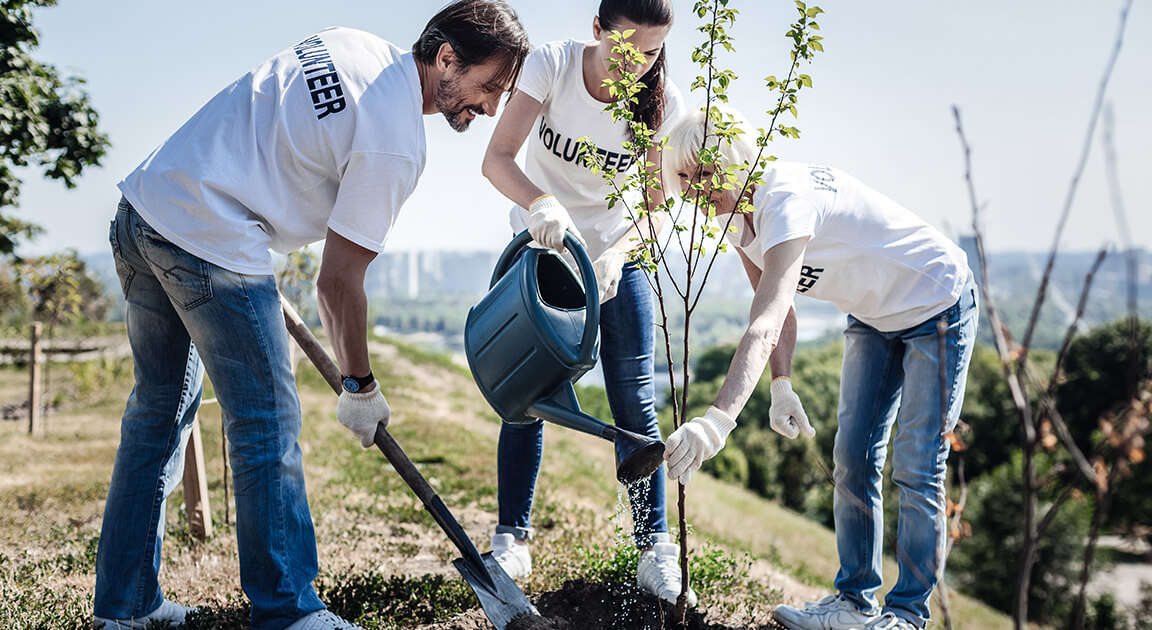
There’s no denying it: you feel good when you do good. The brain stimulation that occurs from being charitable is credited for a variety of benefits, including reducing stress, feeling happier, and improving life satisfaction. Health reasons aside, creating a shared legacy through family philanthropy positively affects your family. A family that works towards a common philanthropic vision perpetuates family values, provides educational opportunities for family members, and fosters family bonds.
PERPETUATES FAMILY VALUES
How does a family collectively determine what it truly values and the resulting legacy it wants to pass on? Defining a shared legacy requires individual and group reflection. A common vision needs to be identified, as it guides the family’s giving strategy. As so aptly put by Yogi Berra, “If you don’t know where you are going, you might wind up someplace else.”
Creating a charitable mission statement is a good way for a family to express its values and passions. A mission statement articulates the family’s purpose for giving and the impact it wants to achieve. It provides the framework for goal setting and helps ascertain where to place the giving focus.
A good example of a clearly stated purpose for giving is the Bill & Melinda Gates Foundation mission statement:
Guided by the belief that every life has equal value, the Bill & Melinda Gates Foundation works to help all people lead healthy, productive lives. In developing countries, it focuses on improving people's health and giving them the chance to lift themselves out of hunger and extreme poverty.
PROVIDES EDUCATIONAL OPPORTUNITIES
Philanthropy is a way for a family to move from talk to action while learning valuable life lessons. “Giving together creates spaces for collaboration and engaged focus on one giving mission and opens the door to multi-generational learning between older and younger members of the family.”[i] Philanthropy provides an exceptional opportunity for learning, regardless of how a family chooses to practice its giving.
Compassion and empathy are taught to younger children when family members model what it means to be charitable and have conversations concerning the challenges faced by those less fortunate.
Money management skills are learned when parents require kids to use the “giving jar” approach to allocating allowance. By sharing a portion of their savings with others, children can experience first-hand what it means to make a difference.
Teamwork, social awareness, and problem-solving is reinforced by volunteering as a family to support a common cause. Serving a meal at a local homeless shelter or assisting with a building project in a low-income community are excellent ways to fortify family values and instill gratitude.
Leadership, governance, and financial competencies are promoted when a family foundation is the vehicle for charitable giving. A foundation is a legal structure that requires corporate governance, exposing junior board members to the intricacies of a philanthropic board. Additionally, it’s an optimal setting for introducing financial fundamentals like investing, budgeting, and grant-making.
FOSTERS FAMILY BONDS
As a family becomes more disparate from size, location and age perspectives, family philanthropy can act as the tie that binds. Foundation meetings and service projects offer opportunities for connection. Practicing philanthropy provides the means for a family to work through generational differences in a nurturing environment to perpetuate its shared legacy.
Jay Hughes talks about the bonds created by family philanthropy in his family wealth book stating, “Most important, it tightens family bonds—the family glue—by recognizing and acknowledging the creativity and passions of each member.”[ii]
RESULTS BEYOND CALCULATION
Does your family have a shared legacy? If not, it may be beneficial to create one with philanthropy at the forefront. Working together for a charitable purpose not only makes the community better, but it does substantial good for your family as well. In the words of Miriam Beard, “The results of philanthropy are always beyond calculation.”
[i] Family Philanthropy Guide. (n.d.). Retrieved from https://givingcompass.org/family-philanthropy/
[ii] Hughes, J. (2004). Family Wealth: Keeping it in the Family - How Family Members and Their Advisors Preserve Human, Intellectual, and Financial Assets for Generations. Bloomberg Press.
Recent News & Insights
Lutz Gives Back + 12 Days of Lutzmas 2025
Tis the Season... For Market Forecasts
Tired of Complex Books? 8 Ways to Simplify Your Accounting
HR Solutions That Elevate the Employee Experience




%20(1).jpg?width=300&height=175&name=Mega%20Menu%20Image%20(2)%20(1).jpg)
%20(1)-Mar-08-2024-09-27-14-7268-PM.jpg?width=300&height=175&name=Untitled%20design%20(6)%20(1)-Mar-08-2024-09-27-14-7268-PM.jpg)

%20(1)-Mar-08-2024-09-11-30-0067-PM.jpg?width=300&height=175&name=Untitled%20design%20(3)%20(1)-Mar-08-2024-09-11-30-0067-PM.jpg)
%20(1).jpg?width=300&height=175&name=Mega%20Menu%20Image%20(3)%20(1).jpg)
%20(1).jpg?width=300&height=175&name=Mega%20Menu%20Image%20(4)%20(1).jpg)
%20(1).jpg?width=300&height=175&name=Mega%20Menu%20Image%20(5)%20(1).jpg)
-Mar-08-2024-08-50-35-9527-PM.png?width=300&height=175&name=Untitled%20design%20(1)-Mar-08-2024-08-50-35-9527-PM.png)


.jpg)




